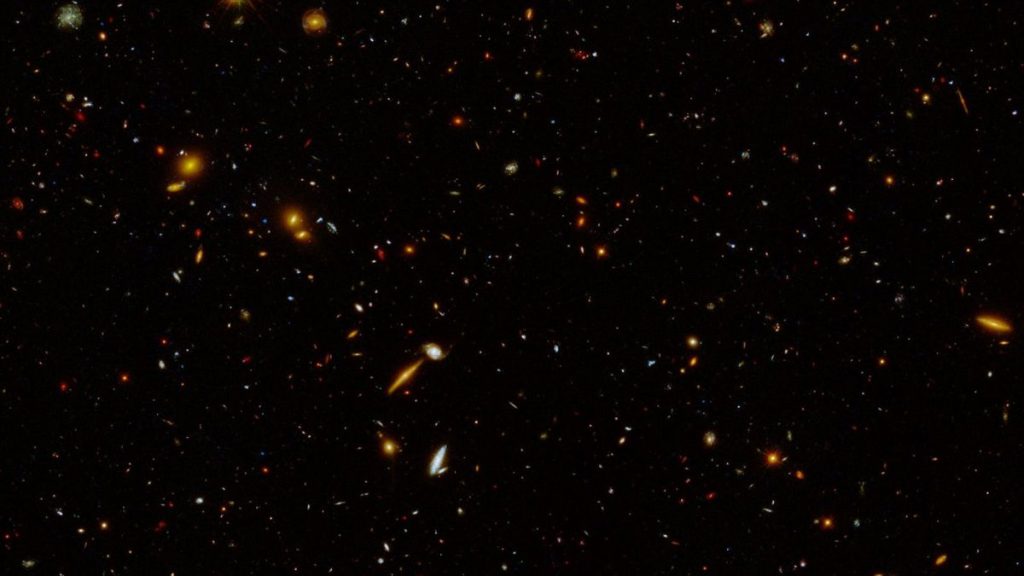Thousands of distant, primordial galaxies in different shapes and sizes glow in infrared light in a newly released image from the Hubble Space Telescope.
The oldest galaxies are about 13 billion years old, dating from just a few hundred million years after the Big Bang. By looking at those galaxies in ultraviolet light, scientists can discover what chemicals lie inside those galaxies — information that is key to understanding how galaxies form and evolve. But there’s a problem with this method: That primordial ultraviolet light gets absorbed before it can reach us.
But scientists can look at many, many galaxies that are just a little younger, 11 billion years old. And that’s what astronomers have done with the Hubble Space Telescope, helping to create this image of a very old, very far crop of galaxies.
Related: Hubble Space Telescope’s largest-ever infrared image peers back 10 billion years
The image is part of a recent survey called UVCANDELS. Over about 10 days of observational time, Hubble imaged about 140,000 galaxies. Some of them are visible in the newly released image — numerous types of galaxies, seen from a range of angles.
UVCANDELS provides unique “insight into ongoing star formation in galaxies both near and far,” said Xin Wang, an astronomer at Caltech who presented the results June 14 at the American Astronomical Society conference in California.
UVCANDELS is the sequel to another survey, CANDELS, which examined infrared and redder visible light. Hubble retraced, with ultraviolet and purpler visible light, the parts of the sky that CANDELS examined, including the one in the newly released image, known as the Extended Groth Strip. By combining layers from both studies, scientists created this new image.
These surveys allow scientists to look back at an era of the early universe known as reionization. During this epoch, kicked off by the formation of the first galaxies, the first light sources began to pierce the cosmic veil, bringing an end to the universe’s “dark age.“
Follow us on Twitter @Spacedotcom and on Facebook.

